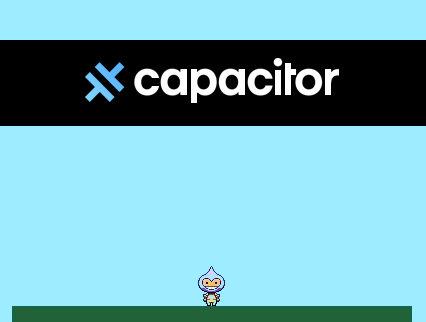Now that we’ve built a scene using Phaser and integrated it with Ionic, we need to make sure our game runs smoothly on different platforms. This is where Capacitor comes in handy. Capacitor is a native runtime for building web apps that can run on iOS, Android, and the web.
In this chapter, we’ll show you how to add platform-specific configurations with Capacitor, ensuring your game works flawlessly on each platform.
Installing Capacitor
Before we get started with adding platform-specific configurations, we need to install Capacitor. To install Capacitor, run the following command in your terminal:
npm install --save @capacitor/core @capacitor/cli
Once Capacitor is installed, we need to initialize it. To do that, run the following command in your terminal:
npx cap init
This command will prompt you to enter some information about your project, such as the app name, app ID, and the web directory. Once you’ve entered the information, Capacitor will generate the necessary files and folders.
Adding Platform Specific Configurations
Now that Capacitor is set up, let’s add some platform-specific configurations. Capacitor allows us to customize the behavior of our app on each platform by adding configuration files for iOS and Android.
To add a configuration file for iOS, create a file named capacitor.ios.config.json in the root of your project directory. This file should contain the iOS-specific configuration options.
Similarly, to add a configuration file for Android, create a file named capacitor.android.config.json in the root of your project directory. This file should contain the Android-specific configuration options.
Here’s an example of how to add a configuration option for iOS:
{
"ios": {
"backgroundColor": "#ffffff"
}
}
This configuration option sets the background color of the app to white on iOS.
And here’s an example of how to add a configuration option for Android:
{
"android": {
"icon": "resources/android/icon.png"
}
}This configuration option sets the app icon on Android to the specified file.
Syncing with Capacitor
Once you’ve added the necessary platform-specific configurations, you need to sync your project with Capacitor. To do that, run the following command in your terminal:
npx cap sync
This command will copy the necessary configuration files to each platform project, ensuring your app behaves correctly on each platform.
Conclusion
In conclusion, using Capacitor to add platform-specific configurations to your Ionic and Phaser JS games is an essential step towards creating a seamless and engaging user experience. By taking advantage of Capacitor’s powerful features and easy-to-use interface, you can tailor your game to specific platforms and ensure that it runs smoothly and efficiently on any device.
We hope this guide has been a valuable resource in your mobile game development journey. By combining the strengths of Ionic and Phaser JS with the capabilities of Capacitor, you’re well on your way to creating captivating and responsive mobile games that will keep your users entertained and engaged. So go forth and create something amazing, and remember to check out our other guides and resources for even more helpful tips and tricks!
Best of Luck,
The OpenForge Team

